Abstract
Of eight strains of Center for Disease Control group DF-1 examined, seven had 62 to 87% deoxyribonucleic acid homology with the neotype strain of Capnocytophaga ochracea and one had 72% deoxyribonucleic acid homology with the type strain of C. gingivalis. Deoxyribonucleic acid homology of four strains of Bacteroides ochraceus with the neotype strain of C. ochrecea was 76 to 86%.
Full text
PDF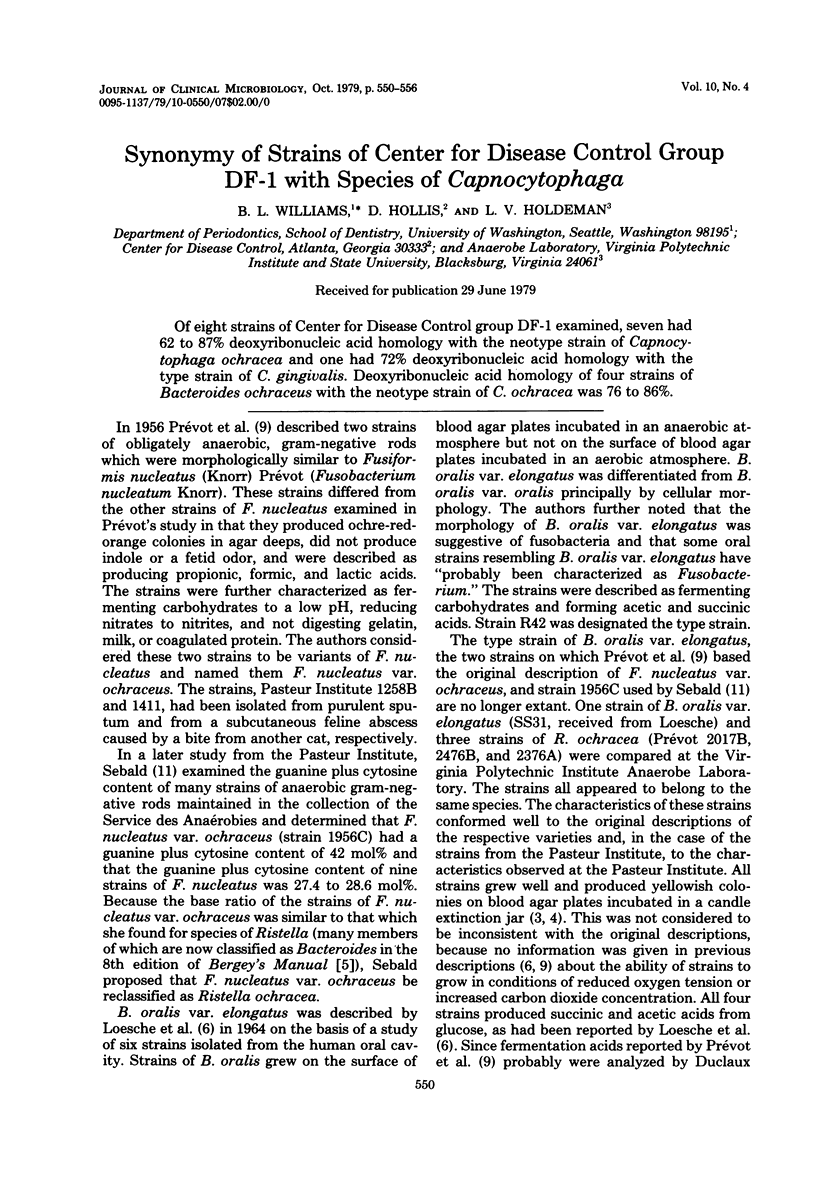
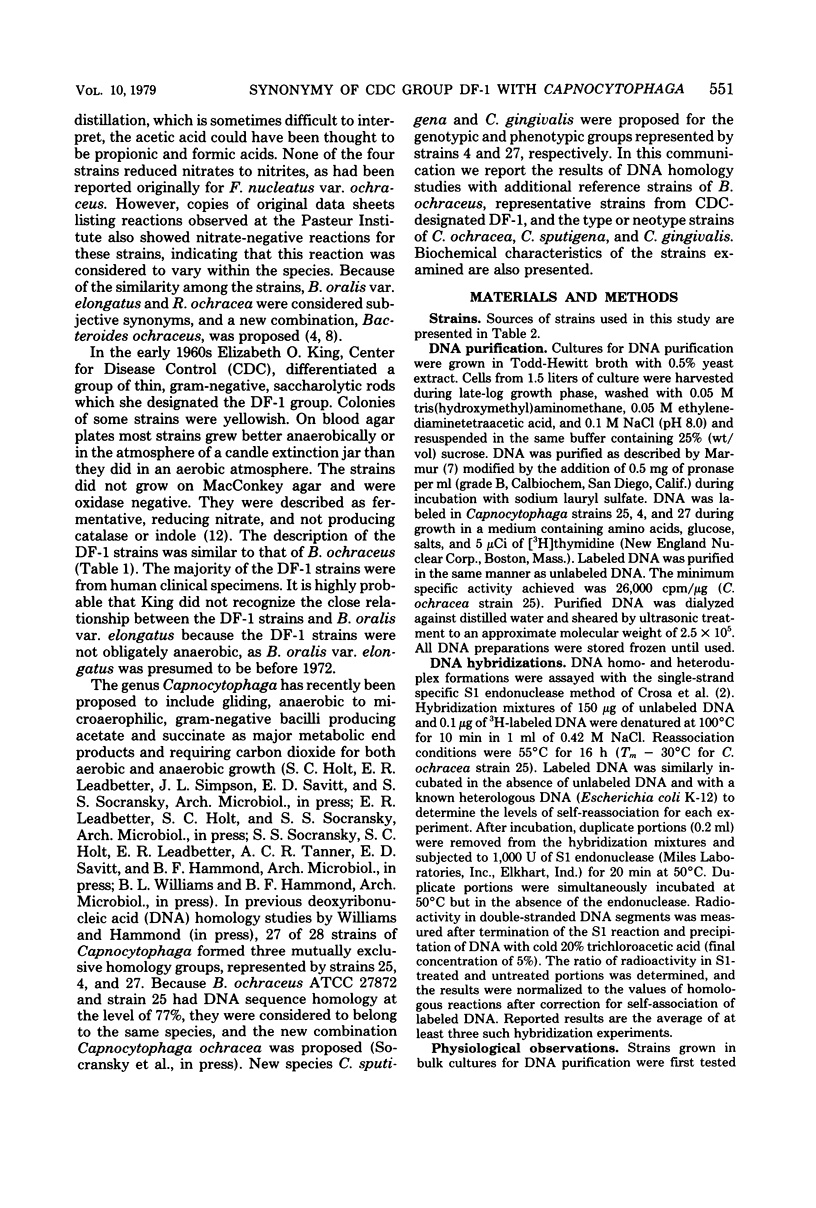
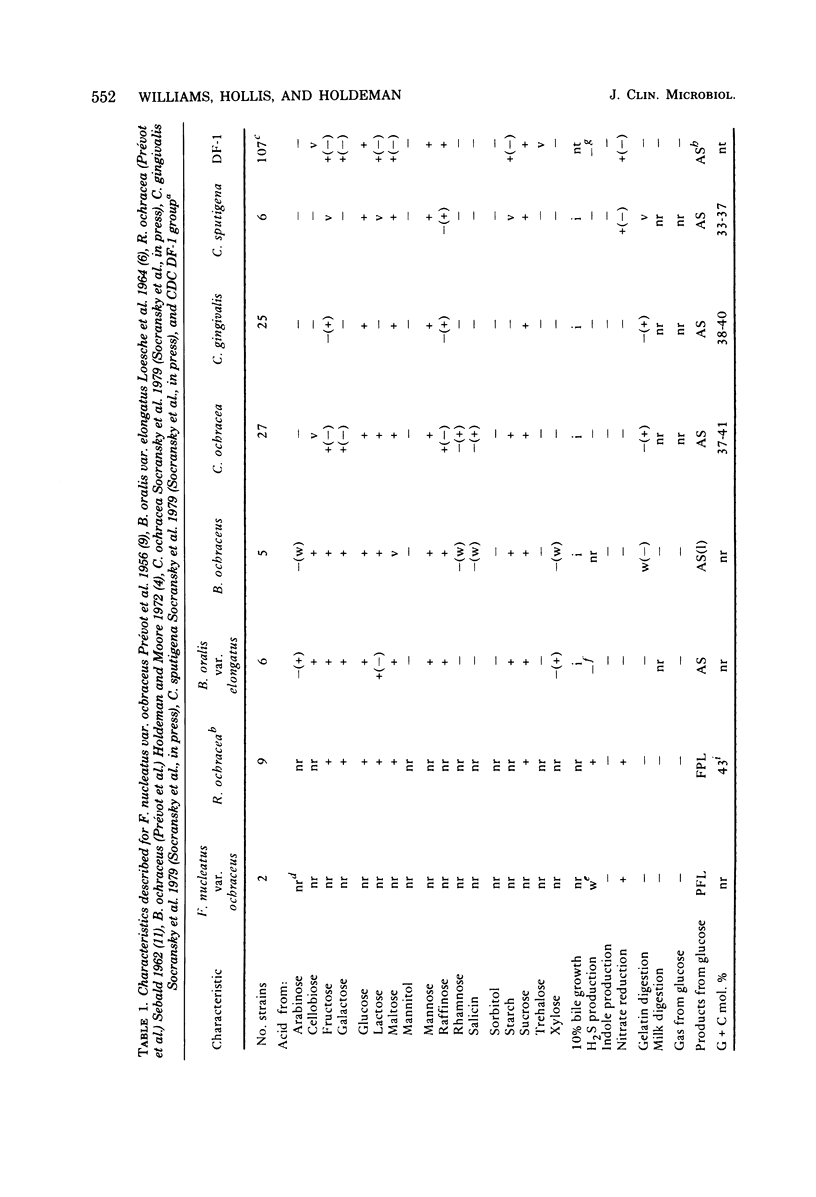
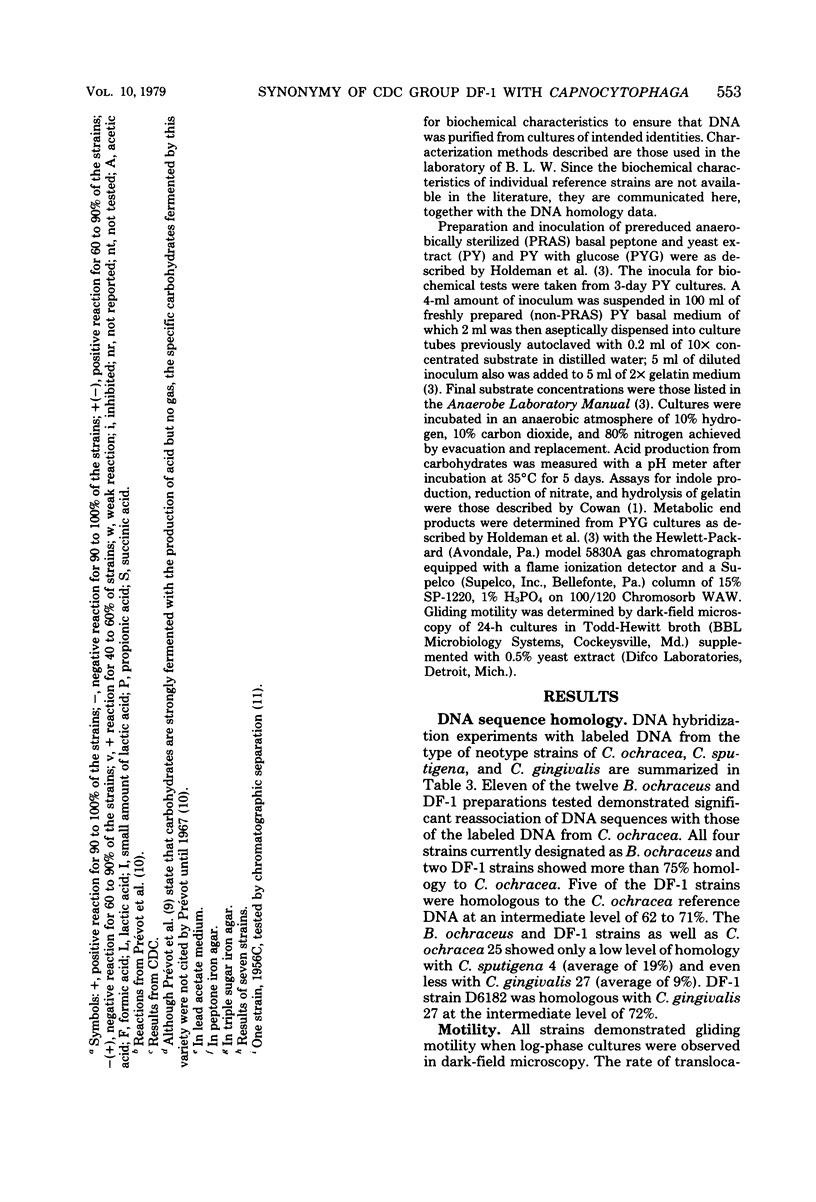
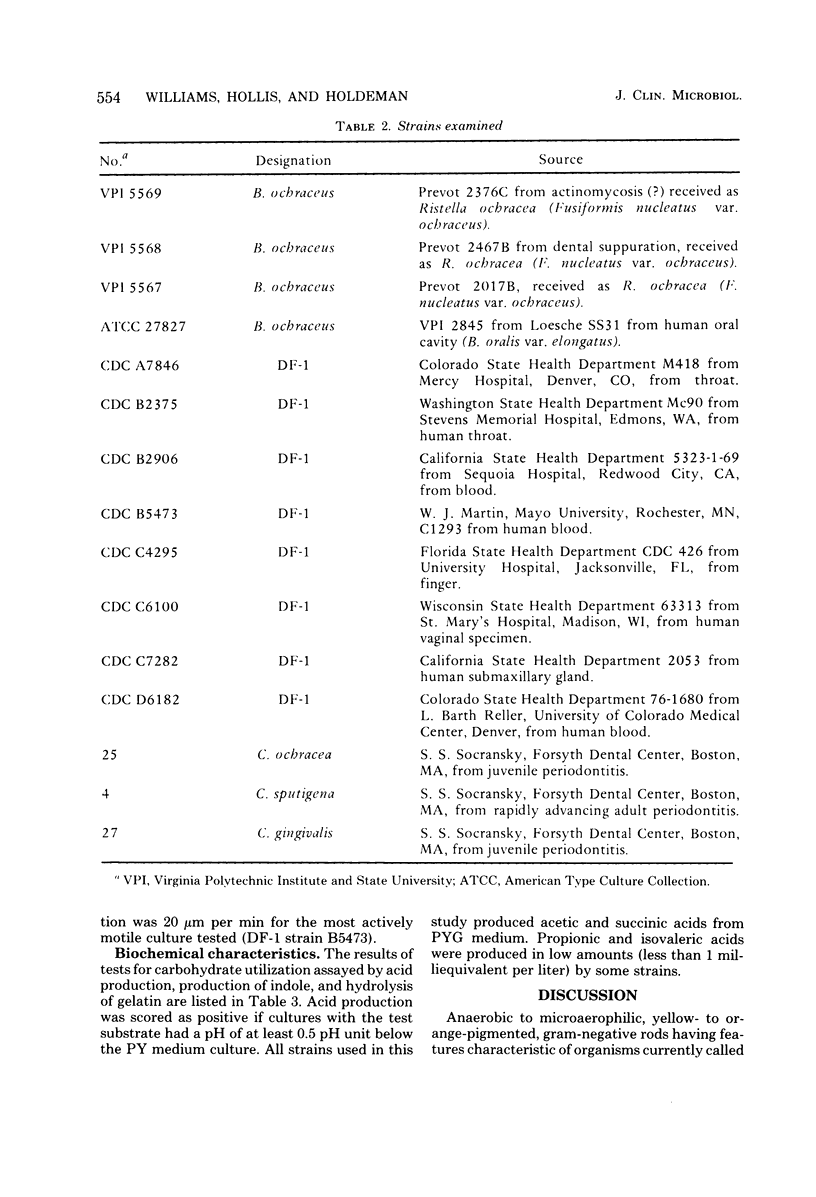
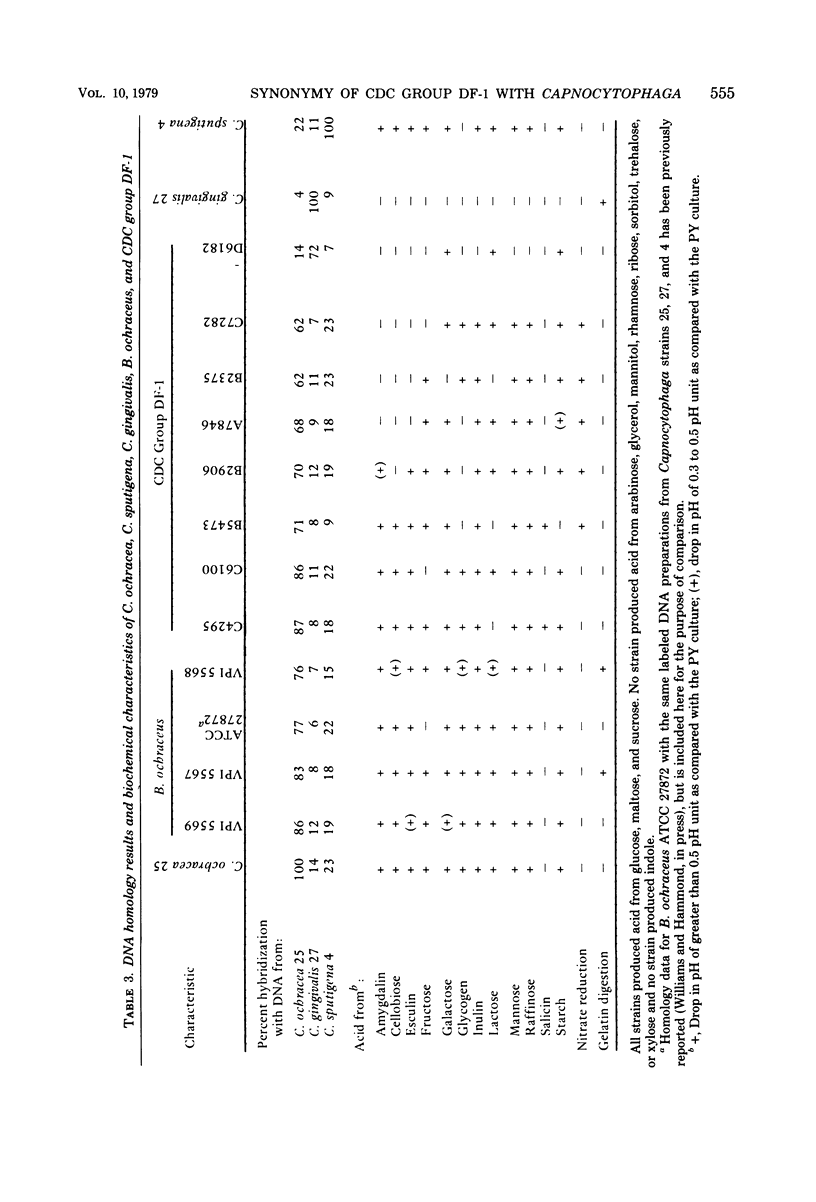
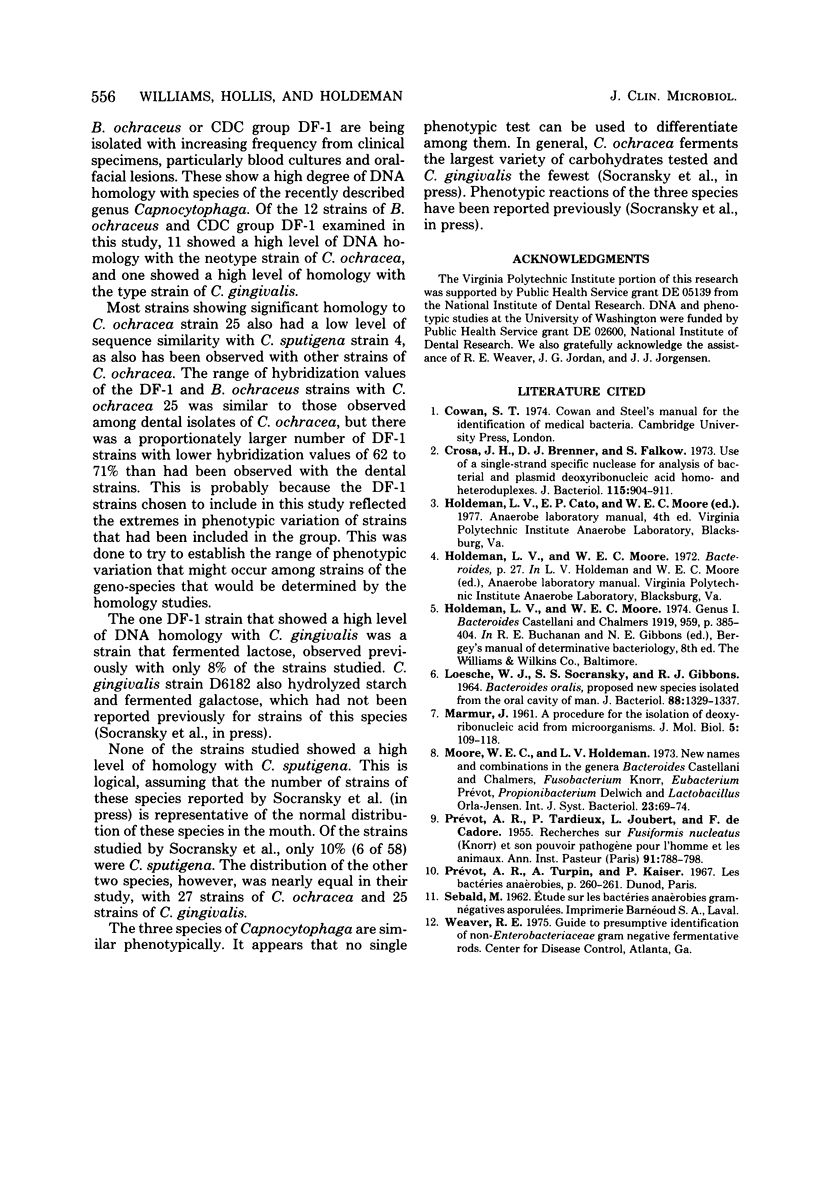
Selected References
These references are in PubMed. This may not be the complete list of references from this article.
- Crosa J. H., Brenner D. J., Falkow S. Use of a single-strand specific nuclease for analysis of bacterial and plasmid deoxyribonucleic acid homo- and heteroduplexes. J Bacteriol. 1973 Sep;115(3):904–911. doi: 10.1128/jb.115.3.904-911.1973. [DOI] [PMC free article] [PubMed] [Google Scholar]
- DE CADORE F., JOUBERT L., PREVOT A. R., TARDIEUX P. Recherches sur Fusiformis nucleatus (Knorr) et son pouvoir pathogène pour l'homme et les animaux. Ann Inst Pasteur (Paris) 1956 Dec;91(6):787–798. [PubMed] [Google Scholar]
- LOESCHE W. J., SOCRANSKY S. S., GIBBONS R. J. BACTEROIDES ORALIS, PROPOSED NEW SPECIES ISOLATED FROM THE ORAL CAVITY OF MAN. J Bacteriol. 1964 Nov;88:1329–1337. doi: 10.1128/jb.88.5.1329-1337.1964. [DOI] [PMC free article] [PubMed] [Google Scholar]
- MARMUR J., DOTY P. Determination of the base composition of deoxyribonucleic acid from its thermal denaturation temperature. J Mol Biol. 1962 Jul;5:109–118. doi: 10.1016/s0022-2836(62)80066-7. [DOI] [PubMed] [Google Scholar]


